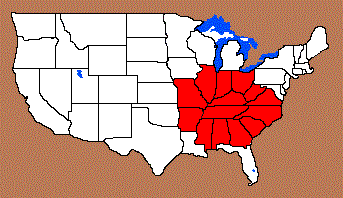Identified By:
Named For: Avocational archaeologist Steve Addison
Date Identified:
Type Site:
This type has references in many collector sources, but no professional references to this type were located. This is considered a collector type.
Cluster:
Total Length 8 to 25 mm
Loyd Doty: ADDISON MICRO-DRILLS – were named after Steve Addison, an early amateur collector. They are small (½” to 1”), narrow, slivers that have a rectangular cross section. Their odd shape was hypothesized as being a result of wear caused by the drilling process, leaving them in a discard stage. It’s not, they are the result of a specialized reduction technology that struck them from parent cores in their current size and shape (although many show use wear/polish). They were created as an efficient tool used to drill stone, bone and shell beads. They are associated primarily with the Mississippian to Woodland periods and are recovered in quantities in the Nodena Phase sites of eastern Arkansas, on Cahokia sites nearby in southern Illinois and at Poverty Point cultural sites to the south. There is also a similar technology found among the Puebloan cultures in the desert southwest, and undoubtedly others in various other parts of the Western Hemisphere that I’m not familiar with. Reference: McGuire, J. D. 1896, "A Study of the Primitive Methods of Drilling", pp 707, 721, 734, 737.
Overstreet (2013) reports "Theory is that this is the final form of a drilling process. The original form was flint slivers with sharp edges that were used as drills. As the sliver was turned in the drilling process, the opposite edges in the direction of movement began to flake off. As the drilling operation proceeded, the edges became steeper as more and more of each side was flaked. Eventually a thin, steeply flaked, rectangular drill form was left and discarded. Unique in that these micro artifacts are not made and then used, but are created by use, and discarded as the edges became eroded away by extremely fine flaking, thus reducing their effectiveness as a cutting edge".

This type is reported in the Eastern U.S.
Date: 3,000 - 400 B.P.
Cultural Period: Woodland to Mississippian
Glacial Period: Neoglacial to Little Ice Age
Culture:
Drill


